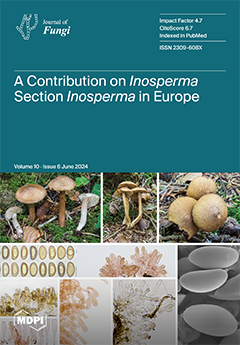Several strains of
Trichoderma are applied in the field to control plant diseases due to their capacity to suppress fungal pathogens and control plant diseases. Some
Trichoderma strains also are able to promote plant growth through the production of indole-3-acetic acid (IAA). In southern Thailand, the local rice variety “Chor Khing” is mainly cultivated in the Songkhla province; it is characterized by slow growth and is susceptible to sheath blight caused by
Rhizoctonia solani. Therefore, this research aimed to screen
Trichoderma species with the ability to promote plant growth in this rice variety and enact biological control against
R. solani. A total of 21
Trichoderma isolates were screened for indole compound production using the Salkowski reagent. The Z2-03 isolate reacted positively to the Salkowski reagent, indicating the production of the indole compound. High-performance liquid chromatography (HPCL) confirmed that Z2-03 produced IAA at 35.58 ± 7.60 μg/mL. The cell-free culture filtrate of the potato dextrose broth (CF) of Z2-03 induced rice germination in rice seeds, yielding root and shoot lengths in cell-free CF-treated rice that were significantly higher than those of the control (distilled water and culture broth alone). Furthermore, inoculation with
Trichoderma conidia promoted rice growth and induced a defense response against
R. solani during the seedling stage.
Trichoderma Z2-03 displayed an antifungal capacity against
R. solani, achieving 74.17% inhibition (as measured through dual culture assay) and the production of siderophores on the CAS medium. The pot experiment revealed that inoculation with the
Trichoderma sp. Z2-03 conidial suspension increased the number of tillers and the plant height in the “Chor Khing” rice variety, and suppressed the percentage of disease incidence (PDI). The
Trichoderma isolate Z2-03 was identified, based on the morphology and molecular properties of ITS, translation elongation factor 1-alpha (
tef1-α), and RNA polymerase 2 (
rpb2), as
Trichoderma breve Z2-03. Our results reveal the ability of
T. breve Z2-03 to act as a plant growth promoter, enhancing growth and development in the “Chor Khing” rice variety, as well as a biological control agent through its competition and defense induction mechanism in this rice variety.
Full article






